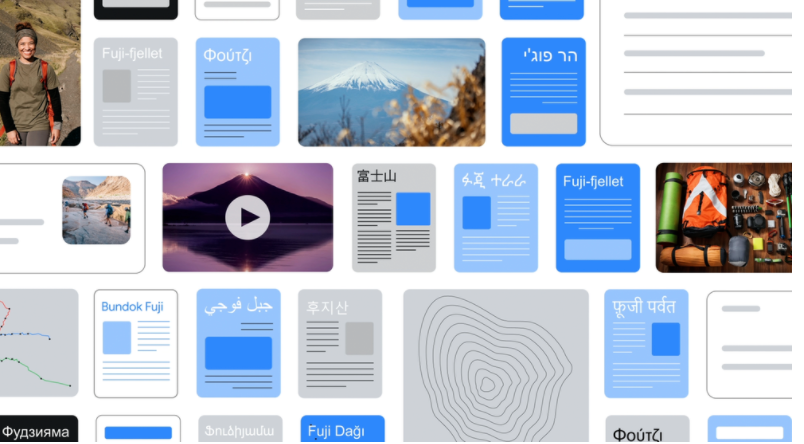SEO Consultant Qamar Zaman provides an explanation of how Google’s MUM, which is powered by AI, will change the search landscape.
MUM or Multitask Unified Model will power specific search features in the coming months. A thousand more powerful than BERT, Google’s upcoming search algorithm, MUM, is a new AI milestone for understanding information. This latest algorithm has the potential to transform how Google Search returns results from complex queries that need multiple answers.
What makes MUM more robust than BERT, its predecessor, is that it understands language and generates it. According to Pandu Nayak, Google’s Vice President for Search, MUM is trained across 75 languages.

“It’s trained across 75 different languages and many different tasks at once, allowing it to develop a more comprehensive understanding of information and world knowledge than previous models,” Nayak wrote.
Another factor that makes MUM very robust is that it has the potential to understand multimedia information.
“And MUM is multimodal, so it understands information across text and images and, in the future, can expand to more modalities like video and audio,” Nayak further shared.
To better understand how MUM works, Nayak wrote an example scenario on how MUM interprets complex queries.
[Animation: Courtesy of Google]
“Take the question about hiking Mt. Fuji: MUM could understand you’re comparing two mountains, so elevation and trail information may be relevant. It could also understand that, in the context of hiking, to “prepare” could include things like fitness training as well as finding the right gear,” Nayak explained.
MUM’s deep knowledge can provide more insights and return more detailed, relevant answers.
“Since MUM can surface insights based on its deep knowledge of the world, it could highlight that while both mountains are roughly the same elevation, fall is the rainy season on Mt. Fuji so you might need a waterproof jacket. MUM could also surface helpful subtopics for deeper exploration — like the top-rated gear or best training exercises — with pointers to helpful articles, videos, and images from across the web,” Nayak wrote further.
Another breakthrough advantage of using MUM to power Google Search is its capacity to remove language barriers. This new algorithm can transfer knowledge across languages. According to Nayak, MUM can learn from sources that aren’t written in the language users wrote their search in and help bring that information to them. He provides a very helpful example of how MUM does this.
“Say there’s really helpful information about Mt. Fuji written in Japanese; today, you probably won’t find it if you don’t search in Japanese. But MUM could transfer knowledge from sources across languages, and use those insights to find the most relevant results in your preferred language. So in the future, when you’re searching for information about visiting Mt. Fuji, you might see results like where to enjoy the best views of the mountain, onsen in the area, and popular souvenir shops — all information more commonly found when searching in Japanese,” Nayak wrote.
Since MUM is multimodal, it understands information simultaneously across different media formats. Nayak elaborates: “Eventually, you might be able to take a photo of your hiking boots and ask, ‘can I use these to hike Mt. Fuji?’ MUM would understand the image and connect it with your question to let you know your boots would work just fine. It could then point you to a blog with a list of recommended gear,” Nayak wrote.
With MUM’s powerful capabilities, Mark Sullivan, Google’s Search Liaison, predicts that search might begin to look more like research, and Google may act more like a research assistant on the user end.
“Instead of just a smart gopher that knows where everything is on the web, Google may act more like a research assistant with subject matter expertise,” Sullivan wrote.
From the perspective of those running websites, Qamar Zaman, an SEO Consultant and CEO of KISS PR, predicts that MUM could impact search engine optimization practices in the near future.
“The need to create multimedia content optimized for long-tail keywords and conversation question queries is more important than ever,” Zaman said. “If you want your content to rank on Google after MUM is rolled out, you need to craft content that provides comprehensive answers and solutions to the problems of your target audience.”
Google said that they would use human raters to assess the search results MUM will generate. The search giant assures Google Search users to watch for signs of bias that may have been introduced in the training data.
KISS PR Story, a leading PR storytelling/video marketing company, helps businesses tell their stories and grow. Qamar Zaman is the CEO of KISS PR Story. By generating more attention for what your business does, potential customers will understand why they should buy from or use you — all while telling them about your unique and compelling story. Until then mum’s the word! You can follow Qamar Zaman for more such insights.






